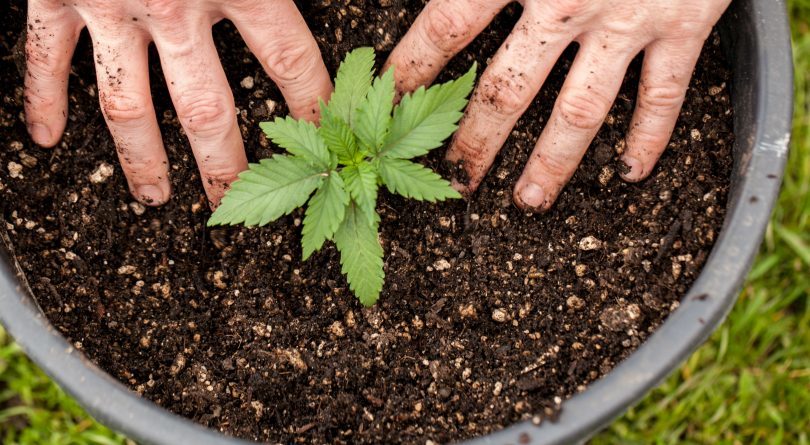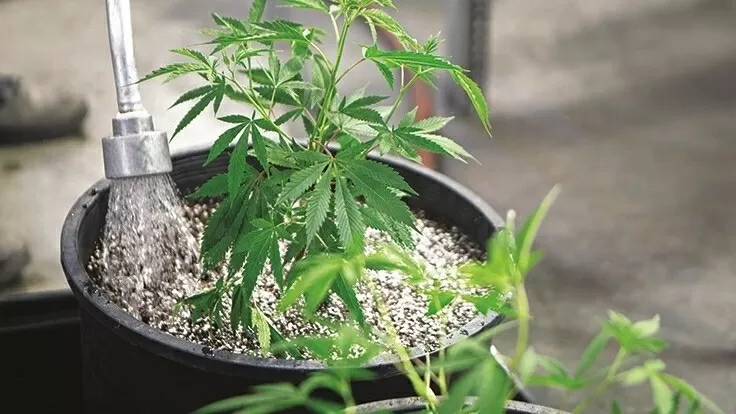If you're thinking about growing cannabis for the first time, whether it be hemp or marijuana, you have a long journey ahead of you.
Nobody becomes a cannabis grow master overnight. It takes a lot of research and effort—both physical and mental—to get a high-quality yield. It also takes making a lot of mistakes and learning from those mistakes to get it right.
Be advised that cannabis growing mistakes are costly, even for the small-time home grower.
To get you started, we've created a go-to guide on how to grow cannabis the right way. Pay close attention to the following tips and techniques for growing cannabis, and you'll be well on your way to a fruitful harvest.
Your Guide to Growing Cannabis
In nature, cannabis grows like a weed—no pun intended. That's why the most important part of your grow operation will be your ability to mimic the natural environment in which the plant thrives. Not only will you have to provide the proper environment, but you'll need to maintain that environment as well.
Besides understanding what type of environment supports quality cannabis growth, you also need to be ready to invest in equipment and other materials. For a small indoor grow of six pots or less, be ready to shell out around €1,000, give or take.
Lastly, growing cannabis requires your time. Make sure you can set aside 30 minutes to an hour each day to care for your plants properly.
Now without further ado, here are our essential tips for growing cannabis from start to finish:
It All Starts With the Genetics
The secret to growing great cannabis begins with excellent genetics. Mid-grade seeds and clones will only take you so far, and they'll likely disappoint you in the end.
The first thing you want to do is figure out what type of cannabis you want to grow. You have plenty of options here between sativas, indicas, and hybrid strains. Once you've narrowed that down, you want to take a look at each strain's genetics and their cultivars' needs.
Some strains are more finicky than others, requiring more attention. Other strains are more suitable for outdoor grows vs. indoor grows. Some are mold-resistent, while others are prone to pests. For example, OG Kush is a finicky strain, but it does better indoors despite its tendency to stretch and canopy.
You have quite a variety to choose from. If you're unsure where to start, you can visit your local dispensary for advice or check out an online seed bank.
Indoor or Outdoor?
Next, you'll want to decide where you want to set up your grow operation. If you live in a part of the world where the climate is optimal for cannabis growth, then more power to you. Most people opt for an indoor setup as it gives them more control over the plant's environment, the elements, and other outside factors, including pests and legalities.
An indoor grow allows you to take advantage of hydroponic systems. With hydroponic grow methods, each cannabis plant's roots are grown in a tub of flowing water. This promotes faster growth as it supplies nutrients directly. When grown in soil, the roots have to dig and expand to search for what it needs, expelling its energy.
Where you choose to grow your cannabis will directly affect the growing medium you use and your initial investment costs. It'll also affect the strain you choose.
Choose the Best Growing Medium

If you're growing indoors, as we mentioned, the hydroponic method is the best. However, it's not the only option. You can still use a specially mixed potting soil, and the use of coco coir is on the rise.
Coco coir is excellent for beginners because it allows for a hydroponic-like setup, but it's easier to flush. It also provides the feel of soil gardening, but it's lighter in texture and absorbs more moisture since it's comprised of fibrous coconut husks. It also dries out rather quickly, offering a buffer for beginners that make the common mistake of adding too many nutrients.
If you're growing cannabis outdoors, your best bet is to mix your own organic soil. To make an organic soil primed for your cannabis, you need a healthy mix of bio-live, alfalfa meal, oyster shells (for calcium), blood meal, bone meal, humic acid, and kelp.
The greatest benefit to outdoor growing with an organic soil mix is that you'll have created an excellent base of nutrients for your plants. That means you won't have to focus on feeding them as much throughout their growth cycle. It'll also increase the flavor and aromatic profiles of your buds.
Get the Lighting Right
A full-spectrum light setup is critical to an indoor grow. LEDs, LECs, and HPS will give your cannabis the best yields. Just make sure they come with balasts and hoods.
To calculate the approximate wattage you'll need, simply measure your canopy's length and width and multiply them together. The canopy is the area within the grow tent that your plants will occupy, and each plant should only take up 0.37 square meters of that space to allow for maximum growth.
If you're growing outdoors, you have the advantage of the sun—but you should have a backup light on standby in the event of inclement weather.
Understanding Nutrient Requirements
The most important part of feeding your cannabis is getting the base macronutrients down. Those macronutrients include nitrogen (N), phosphorus (P), and potassium (K)—or NPK. The ideal ratio for the beginning stages of your cannabis's life cycle in terms of NPK is 20-5-10, respectively.
When it's flowering time, you want to cu back on the nitrogen and give your plants a feed ratio of 5-30-20. Nitrogen is necessary for the beginning stages as it promotes leaf growth while phosphorous promotes the plant's blooming efforts, and potassium affects size and density.
You also want to be aware of the necessary micronutrients—boron, chlorine, manganese, iron, calcium, sulfur, molybdenum, and zinc. You won't have to worry too much about these as they'll likely be included in the organic feed you purchase. If you're growing outdoor, your organic soil mix will provide the necessary micronutrients as well.
You won't need to start feeding your plants until they're about three to four weeks old. This is when they've reached their vegetative growth phase. The macronutrients you purchase should come with a feed chart that lets you know how much feed to give your plants and when. Follow it closely!
Water Quality and pH is Key
The amount of dissolved solids in tap water and even filtered water can affect your plants negatively. Using a reverse-osmosis (RO) water filtration system is your best bet. Additionally, you'll want to test the water's PPM (parts per million) for consistency and pH.
The pH level of your water is critical to the overall health of your plants. Without getting too scientific, pH stands for potential of hydrogen as it's a measure of hydrogen ions. Your plants depend on the right pH balance for maximum nutrient uptake.
The optimal pH range for a hydroponic setup is between 5.5 and 6.5 on a scale of 1 through 10. For an outdoor setup with soil, the range is between 6.0 and 7.0.
Pay Attention to Temperature, Humidity, and CO2
Whether you're growing indoors or outdoors, you want to keep temperatures between 22 and 26 degrees Celsius (72 to 80 degrees Fahrenheit). Additionally, humidity should be between 50 and 55 percent. These conditions will ensure optimal CO2 levels for the plants to feed on.
If the environment becomes too hot, cold, wet, or dry, CO2 levels will diminish and your plants will die. For small indoor setups, you'll need at least two oscillating fans for airflow. For larger setups, you'll want to install an exhaust system for perfect air quality.
Let Your Plants Rest
When your cannabis reaches its flowering stage, it's going to need its beauty sleep. For up to nine weeks, they'll need 12 hours of light and 12 hours of darkness. Interrupting their rest periods, i.e., allowing light in, can hurt your end result's quality.
Flush Before Harvesting
The last thing you need to do before harvesting is flush your plants to eliminate excess nutrients. This should be done 15 to 20 days before it's time to harvest. During this time, you'll need to stop feeding your plants and give them only quality water with a pH of 6.0.
You'll know you're doing it right when the leaves begin to turn yellow.
Flushing your plants before harvesting is non-negotiable. Skipping this step will result in a nutrient-dense yield, which will cause your buds to become carcinogenic.
Learn From Your Mistakes
Even with the painstaking amount of research and proper setup, you're bound to make a few mistakes along the way. This is especially true if you're growing cannabis for the first time. Don't worry, you'll get the hang of it and become a pro soon enough.
If you find that you need some help with your cannabis grow, feel free to reach out to us. We're more than happy to give you a few more pointers on how to grow cannabis for yourself. Otherwise you can consult our online weed shop for different varieties of marijuana light.
 Italiano
Italiano Español
Español English
English Français
Français Deutsch
Deutsch
